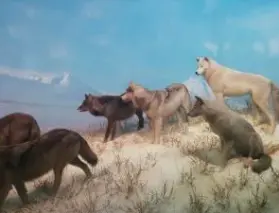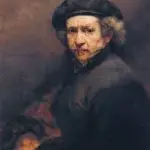
“Rewilding,” is the theme for the first season of the Open Div Podcast, which launches Tuesday July 5th. My inspiration for creating this season were partly self-interest. Several months ago, I interviewed Paul Bulencea, who told me how, every day, he would go to the same cave in Guatemala and play his flute for the frogs.
At first, the frogs didn’t like him much. But each day he returned, they hopped a bit closer. Eventually, they sat beside him as he played his flute for them.
He told me about other such relationships. How he learned from a lineage of Romanian trackers to follow bison herds. How one person befriended a lake, learned its patterns, and became its steward. By the end of our conversation, I had tears in my eyes.
These stories were shot through with reverence, friendship, and palpable love. I needed to learn more.
For the inaugural season of the Open Div Podcast, I set out to interview experts who understood the power of creating felt relationships with the “more-than-human world,” as environmental philosopher David Abram puts it. I spoke with wilderness guides, scholars from indigenous communities, mythologists, and tenders of land sanctuaries, about ways to rewild humanity.
In ecological rewilding, humans step back and leave the land alone. Plants burst naturally from the earth. Animals come out of hiding. Bison roam. Wolves hunt. The wilderness turns wild again.
Rewilding our humanity is about returning to our original essence. What would that look like? And how can we achieve it?
Tyson Yunkaporta suggests civilizations (“societies that build cities”) are an outgrowth of narcissism, are unsustainable, and should be dismantled. Instead, Yunkaporta suggests we all have innate access to indigeneity that arises when we return to intimate connection with the land.
Michael Meade urges each of us to reconnect with our innate genius and apply it to the complex problems of our age. His work explores mythologies from around the world for wisdom about how to relate to a troubled world.
Padma Menon advocates for the ineffable wisdom of dance. Her practice of Indian sacred dance puts women in touch with the archetypal goddess for the sake of personal empowerment and expresses a type of philosophy (a “love of knowledge”) that is based in the non-linguistic wisdom of the body.
Emerald North leads people on multi-day vision fasts into the wilderness as part of the School of Lost Borders. Through these intense confrontations with nature, wilderness guides like North seek to break open our ego and put us in touch with our soul.
Rebeka Ndosi speaks about the way our nervous systems change when we are out in nature and the need for specifically black-owned, nature-based healing centers where Black, Indigenous, and communities of color can rejuvenation mind, body and soul.
Over the course of 11 interviews, I realized just how far removed mainstream environmentalism is from crafting a genuine, felt relationship with the earth. Modern environmentalism, by-and-large, approaches the natural world with scientific goggles or legal paperwork.
In creating this season, I began to understand what indigenous people mean when they say “connection to the land.” That connection—which extends through both ancestral and mythic time—was far more complex and intimate than I ever imagined.
Modern environmentalism felt mechanical by comparison. My conversations have led me to believe that if we hope to forge deep relationships with the more-than-human world we need to cultivate something akin to a modern form of animism.
Animism is believed to be the most ancient form of human spirituality. An animist sees all of nature as a tapestry of living beings—and it is. An animist worships nature with reverence, else they disturb its proper balance—as we are. Most importantly, an animist may make real sacrifices to nature—and we must.
We have to sacrifice our comfort, our narcissism, our greed. We have to return large areas of land to a wild and natural state. We must also seriously consider returning land to their original stewards: indigenous peoples who still relate to the land as a living, holy being or family of beings (and who may be as or more adept at stewarding land as park rangers). We ourselves must all learn to relate to the land as a living entity, worthy of love and capable of teaching us a thing or two about ourselves.
Imagine if, instead of speed-hiking through a long cascade of peaks, we bonded to just one. Imagine if we ambled on that mountain’s shoulders and spoke to it as an ancestor? Imagine if we sat together with the mountain, as did Zen poet Li Bai, “until only the mountain remains?”
Our ecology would become “deep” as Norwegian ecologist Arne Næss put it. Næss chained himself, along with other protestors, to boulders to prevent the damning of the Mardalsfossen, a waterfall in a Norwegian fjord which Næss had come to love. If a fjord truly becomes to us like a sister, wouldn’t we defend her as a sister? If an ocean truly becomes to us like a mother, wouldn’t we care for her as a mother? And if God is the thing from which all life emerges and to which all life returns, shouldn’t we fall to the dirt and worship this blue dot?
Here, all ground is holy ground.
Subscribe to The Spiritual Naturalist Society
Learn about Membership in the Spiritual Naturalist Society
__________
The Spiritual Naturalist Society works to spread awareness of spiritual naturalism as a way of life, develop its thought and practice, and help bring together like-minded practitioners in fellowship.
SNS strives to include diverse voices within the spectrum of naturalistic spirituality. Authors will vary in their opinions, terms, and outlook. The views of no single author therefore necessarily reflect those of all Spiritual Naturalists or of SNS.












